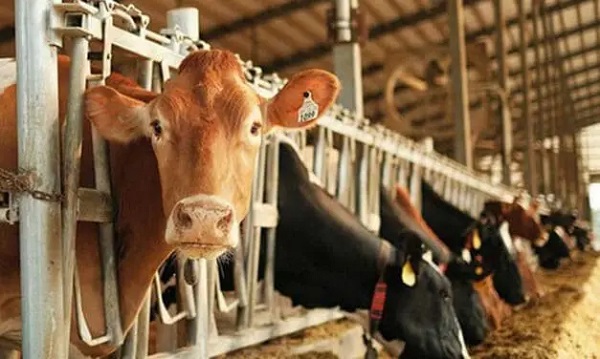National
Graves and school murders? What were we thinking?
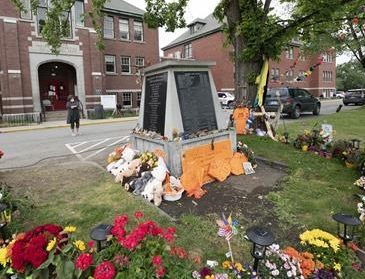
From the Frontier Centre for Public Policy
The year 2021 was the year of the Kamloops graves.
It was the top news story of the year. It was reported by CBC and all mainstream media that ground penetrating radar had detected remains of 215 indigenous children who were found buried in the old apple orchard on the grounds of the former Kamloops Indian Residential School.
The burials had taken place in secrecy in the middle of the night. Priests and nuns, who were apparently responsible for the deaths, wanted to hide the results of their crimes and forced students, “as young as six” to dig the graves of their dead classmates.
Indigenous leaders claimed there were tens of thousands more murdered and secretly buried indigenous children across the length and breadth of Canada — children who “went to residential school and never returned.”
The Trudeau government ordered flags flown at half mast, where they remained for six months. It made $320,000,000 available to indigenous communities that wanted to search for more missing children. Many accepted the offer.
2023 was the year this whole story fell apart.
There were no secretly buried children.
There were no “thousands of missing children.”
The junior ground penetrating radar operator, Sarah Beaulieu, who made her sensational claim in 2021, had most likely mistaken the remnants of 1924 septic field trenches for graves.
The indigenous children who died at residential schools mostly died of tuberculosis, as did those who never attended a residential school. Most were buried on their home reserves and their burial places had simply been forgotten.
Simply put, all of the hysteria of 2021 over secret burials and missing children was for nothing. Canada had fallen for the biggest fake news story in the history of the nation.
A new book of essays by Professor Tom Flanagan and CP Champion examines how this false story took hold and how it was debunked.
Tom Flanagan is Canada’s foremost expert on indigenous issues. Champion is the editor of the Dorchester Review, where many of these valuable essays can be found.
The essays tell the story of how Canadians fell for a story that made no sense from the outset. Why would priests kill and secretly bury children? There was no historical record of any such events ever happening.
If the children went to the residential school “and never returned” wouldn’t there be some record of such a thing happening — a parent complaining, a police report, a complaint to a chief etc.? But there was no such thing.
The odd thing is that neither CBC nor practically any other reporter asked any such questions. They not only repeated the false claims, they amplified and exaggerated them. So 215 “soil disturbances” (which is what the radar had detected) became “human remains,” “bodies,, “graves” and even “mass graves.”
Conrad Black wrote the foreword to the book. Black is one of the few Canadians who recognized from the outset the Kamloops claim was absurd. Black was also one of the few writers who has consistently denounced the disgraceful claim that Canada is guilty of any kind of genocide.
He properly criticized former Chief Justice Beverly McLachlin when she first put forward the baseless claim in 2015 and he has consistently defended Canada against such slander.
The writers (disclosure: I am one) systematically take apart the false Kamloops and copycat claims. Professor Jacques Rouillard, using research done by Nina Green proves the deaths of the KIRS students who died while enrolled at the school were properly documented, that the deaths were mainly from the diseases of the day and that the children were almost all buried on their home reserves.
These children had not been buried in secrecy, they were never “missing” and there was absolutely nothing sinister about their deaths.
Children from the community who attended day schools, or didn’t attend school at all, died in similar numbers from the same diseases. Death from disease was simply a sad fact of life and had nothing to do with whether or not a child attended a residential school.
The only “evidence” that could possibly support the secret burial thesis — apart from the usual conspiracy theories that are told in every community — was the report from Sarah Beaulieu of soil disturbances detected by ground penetrating radar that she opined could be possible graves.
However, on closer inspection these claims fall apart. The authors expose Beaulieu’s negligence in failing to research previous excavations before recklessly venturing an opinion on such an important matter.
Her other mistaken assumptions, such as false reports about a child’s tooth and bone, are also exposed. It is noteworthy the T’kemlups Band originally promised to release Beaulieu’s report to the public but reneged on that promise when it became apparent the report was unreliable, just as they have reneged on their stated intention to excavate.
The other essays examine the other claims made about evil priests, secret burials and missing children. The authors systematically dissect the claims, and expose them as the false claims that they are.
As for the claim there are “thousands of missing children” who are alleged to have entered residential schools “and never returned” to their parents, and now lie in “unmarked graves” Professor Flanagan puts it succinctly: These are not “missing children” — they are “forgotten children.” They now lie in unmarked graves for the simple reasons that their families didn’t keep up their gravesites and forgot about them.
The current grave-searching mania now occurring in indigenous communities is fueled by the $320,000,000 that then Indigenous Affairs Minister Marc Miller dangled before poor indigenous communities like golden carrots.
Other essays in the book examine other common misconceptions about residential schools, generally. One of the most persistent is the claim — consistently made by CBC for two decades — that “150,000 children were forced to attend” residential schools.
This claim is completely untrue.
Prior to 1920, status Indian parents were not required by law to send their children to any school — and most didn’t. After 1920, status Indian parents could choose between sending their children to day schools or residential schools. It is only where no day school was available that parents were required to send their children to residential schools.
But even then, there was seldom enforcement of that law. Only in the case of orphans or severe child neglect (usually due to alcohol abuse) was parental consent dispensed with (for obvious reasons).
CBC has been advised of their repeated reporting error, but continues to push this misinformation. Their justification for doing so is a word salad of obfuscation that is either meant to mislead or shows incompetence on their part.
In sum, the hysteria following the May 2021 announcement 215 “graves” had been discovered at Kamloops is not something that is easily explained. Why most Canadians seemed willing to accept such a preposterous claim in the first place will be a subject for historians and psychologists for decades.
Why the Trudeau government — without a shred of real evidence — ordered flags lowered for months; why the CBC and other mainstream media failed to ask even the most elementary questions about claims that they must have known were false; why indigenous leaders decided to put forward a false narrative that they must have known would eventually be exposed as a fraud — these are all questions examined in the revealing essays in this important book.
Although CBC — and even government publications — continue to put out fatuous claims about “graves,” “probable graves” and “human remains” the international community concluded some time ago that Canada succumbed to some kind of mass hysteria in May 2021, when the preposterous Kamloops claim was first made.
Was this national gullibility related to the strange lockdown years? Was it “Canada’s George Floyd moment? Was it “Canada’s woke nightmare?”
These are questions readers can ask themselves when reading these essays. Professor Flanagan and Chris Champion deserve a lot of credit for swimming against a tide of wokeness to put out this important book.
They are part of a research group — not afraid to be called “deniers” — who wrote the essays published in the book and initiated the Indian Residential School Research Group where additional information can be found.
For original documents and primary sources readers can go to indianresidentialschoolrecords.com.
In May of 2021, Canadians fell for “fake news”. There is an old saying: “Fool me once, shame on you. Fool me twice, shame on me”.
This book should be read with that saying in mind.
Together with the question: “What were we thinking?”
Brian Giesbrecht, retired judge, is a Senior Fellow at the Frontier Centre for Public Policy.
Environment
Canada’s river water quality strong overall although some localized issues persist

From the Fraser Institute
By Annika Segelhorst and Elmira Aliakbari
Canada’s rivers are vital to our environment and economy. Clean freshwater is essential to support recreation, agriculture and industry, an to sustain suitable habitat for wildlife. Conversely, degraded freshwater can make it harder to maintain safe drinking water and can harm aquatic life. So, how healthy are Canada’s rivers today?
To answer that question, Environment Canada uses an index of water quality to assess freshwater quality at monitoring stations across the country. In total, scores are available for 165 monitoring stations, jointly maintained by Environment Canada and provincial authorities, from 17 in Newfoundland and Labrador, to 8 in Saskatchewan and 20 in British Columbia.
This index works like a report card for rivers, converting water test results into scores from 0 to 100. Scientists sample river water three or more times per year at fixed locations, testing indicators such as oxygen levels, nutrients and chemical levels. These measurements are then compared against national and provincial guidelines that determine the ability of a waterway to support aquatic life.
Scores are calculated based on three factors: how many guidelines are exceeded, how often they are exceeded, and by how much they are exceeded. A score of 95-100 is “excellent,” 80-94 is “good,” 65-79 is “fair,” 45-64 is “marginal” and a score below 45 is “poor.” The most recent scores are based on data from 2021 to 2023.
Among 165 river monitoring sites across the country, the average score was 76.7. Sites along four major rivers earned a perfect score: the Northeast Magaree River (Nova Scotia), the Restigouche River (New Brunswick), the South Saskatchewan River (Saskatchewan) and the Bow River (Alberta). The Bayonne River, a tributary of the St. Lawrence River near Berthierville, Quebec, scored the lowest (33.0).
Overall, between 2021 and 2023, 83.0 per cent of monitoring sites across the country recorded fair to excellent water quality. This is a strong positive signal that most of Canada’s rivers are in generally healthy environmental condition.
A total of 13.3 per cent of stations were deemed to be marginal, that is, they received a score of 45-64 on the index. Only 3.6 per cent of monitoring sites fell into the poor category, meaning that severe degradation was limited to only a few sites (6 of 165).
Monitoring sites along waterways with relatively less development in the river’s headwaters and those with lower population density tended to earn higher scores than sites with developed land uses. However, among the 11 river monitoring sites that rated “excellent,” 8 were situated in areas facing a combination of pressures from nearby human activities that can influence water quality. This indicates the resilience of Canada’s river ecosystems, even in areas facing a combination of multiple stressors from urban runoff, agriculture, and industrial activities where waterways would otherwise be expected to be the most polluted.
Poor or marginal water quality was relatively more common in monitoring sites located along the St. Lawrence River and its major tributaries and near the Great Lakes compared to other regions. Among all sites in the marginal or poor category, 50 per cent were in this area. The Great Lakes-St. Lawrence region is one of the most population-dense and extensively developed parts of Canada, supporting a mix of urban, agricultural, and industrial land uses. These pressures can introduce harmful chemical contaminants and alter nutrient balances in waterways, impairing ecosystem health.
In general, monitoring sites categorized as marginal or poor tended to be located near intensive agriculture and industrial activities. However, it’s important to reiterate that only 28 stations representing 17.0 per cent of all monitoring stations were deemed to be marginal or poor.
Provincial results vary, as shown in the figure below. Water quality scores in Newfoundland and Labrador, Prince Edward Island, New Brunswick, Saskatchewan and Alberta were, on average, 80 points or higher during the period from 2021 to 2023, indicating that water quality rarely departed from natural or desirable levels.
Rivers sites in Nova Scotia, Ontario, Manitoba and B.C. each had average scores between 74 and 78 points, suggesting occasional departures from natural or desirable levels.
Finally, Quebec’s average river water quality score was 64.5 during the 2021 to 2023 period. This score indicates that water quality departed from ideal conditions more frequently in Quebec than in other provinces, especially compared to provinces like Alberta, Saskatchewan and P.E.I. where no sites rated below “fair.”
Overall, these results highlight Canada’s success in maintaining a generally high quality of water in our rivers. Most waterways are in good shape, though some regions—especially near the Great Lakes and along the St. Lawrence River Valley—continue to face pressures from the combined effects of population growth and intensive land use.
Agriculture
End Supply Management—For the Sake of Canadian Consumers

This is a special preview article from the:
U.S. President Donald Trump’s trade policy is often chaotic and punitive. But on one point, he is right: Canada’s agricultural supply management system has to go. Not because it is unfair to the United States, though it clearly is, but because it punishes Canadians. Supply management is a government-enforced price-fixing scheme that limits consumer choice, inflates grocery bills, wastes food, and shields a small, politically powerful group of producers from competition—at the direct expense of millions of households.
And yet Ottawa continues to support this socialist shakedown. Last week, Prime Minister Mark Carney told reporters supply management was “not on the table” in negotiations for a renewed United States-Mexico-Canada Trade Agreement, despite U.S. negotiators citing it as a roadblock to a new deal.
Supply management relies on a web of production quotas, fixed farmgate prices, strict import limits, and punitive tariffs that can approach 300 percent. Bureaucrats decide how much milk, chicken, eggs, and poultry Canadians farmers produce and which farmers can produce how much. When officials misjudge demand—as they recently did with chicken and eggs—farmers are legally barred from responding. The result is predictable: shortages, soaring prices, and frustrated consumers staring at emptier shelves and higher bills.
This is not a theoretical problem. Canada’s most recent chicken production cycle, ending in May 2025, produced one of the worst supply shortfalls in decades. Demand rose unexpectedly, but quotas froze supply in place. Canadian farmers could not increase production. Instead, consumers paid more for scarce domestic poultry while last-minute imports filled the gap at premium prices. Eggs followed a similar pattern, with shortages triggering a convoluted “allocation” system that opened the door to massive foreign imports rather than empowering Canadian farmers to respond.
Over a century of global experience has shown that central economic planning fails. Governments are simply not good at “matching” supply with demand. There is no reason to believe Ottawa’s attempts to manage a handful of food categories should fare any better. And yet supply management persists, even as its costs mount.
Those costs fall squarely on consumers. According to a Fraser Institute estimate, supply management adds roughly $375 a year to the average Canadian household’s grocery bill. Because lower-income families spend a much higher proportion of their income on food, the burden falls most heavily on them.
The system also strangles consumer choice. European countries produce thousands of varieties of high-quality cheeses at prices far below what Canadians pay for largely industrial domestic products. But our import quotas are tiny, and anything above them is hit with tariffs exceeding 245 percent. As a result, imported cheeses can cost $60 per kilogram or more in Canadian grocery stores. In Switzerland, one of the world’s most eye-poppingly expensive countries, where a thimble-sized coffee will set you back $9, premium cheeses are barely half the price you’ll find at Loblaw or Safeway.
Canada’s supply-managed farmers defend their monopoly by insisting it provides a “fair return” for famers, guarantees Canadians have access to “homegrown food” and assures the “right amount of food is produced to meet Canadian needs.” Is there a shred of evidence Canadians are being denied the “right amount” of bread, tuna, asparagus or applesauce? Of course not; the market readily supplies all these and many thousands of other non-supply-managed foods.
Like all price-fixing systems, Canada’s supply management provides only the illusion of stability and security. We’ve seen above what happens when production falls short. But perversely, if a farmer manages to get more milk out of his cows than his quota, there’s no reward: the excess must be
dumped. Last year alone, enough milk was discarded to feed 4.2 million people.
Over time, supply management has become less about farming and more about quota ownership. Artificial scarcity has turned quotas into highly valuable assets, locking out young farmers and rewarding incumbents.
Why does such a dysfunctional system persist? The answer is politics. Supply management is of outsized importance in Quebec, where producers hold a disproportionate share of quotas and are numerous enough to swing election results in key ridings. Federal parties of all stripes have learned the cost of crossing this lobby. That political cowardice now collides with reality. The USMCA is heading toward mandatory renegotiation, and supply management is squarely in Washington’s sights. Canada depends on tariff-free access to the U.S. market for hundreds of billions of dollars in exports. Trading away a deeply-flawed system to secure that access would make economic sense.
Instead, Ottawa has doubled down. Not just with Carney’s remarks last week but with Bill C-202, which makes it illegal for Canadian ministers to reduce tariffs or expand quotas on supply-managed goods in future trade talks. Formally signalling that Canada’s negotiating position is hostage to a tiny domestic lobby group is reckless, and weakens Canada’s hand before talks even begin.
Food prices continue to rise faster than inflation. Forecasts suggest the average family will spend $1,000 more on groceries next year alone. Supply management is not the only cause, but it remains a major one. Ending it would lower prices, expand choice, reduce waste, and reward entrepreneurial farmers willing to compete.
If Donald Trump can succeed in forcing supply management onto the negotiating table, he will be doing Canadian consumers—and Canadian agriculture—a favour our own political class has long refused to deliver.
The original, full-length version of this article was recently published in C2C Journal. Gwyn Morgan is a retired business leader who was a director of five global corporations.
-

 Health2 days ago
Health2 days agoFDA warns ‘breast binder’ manufacturers to stop marketing to gender-confused girls
-

 Agriculture2 days ago
Agriculture2 days agoSupply Management Is Making Your Christmas Dinner More Expensive
-
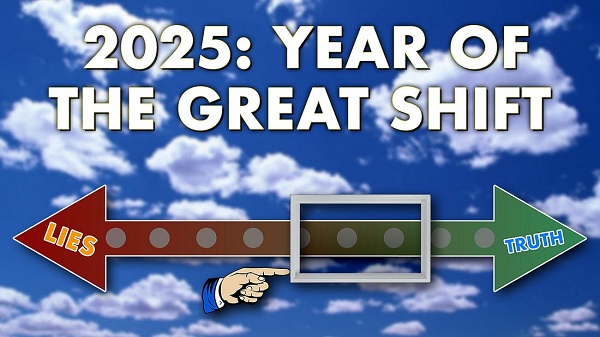
 International2 days ago
International2 days ago2025: The Year The Narrative Changed
-
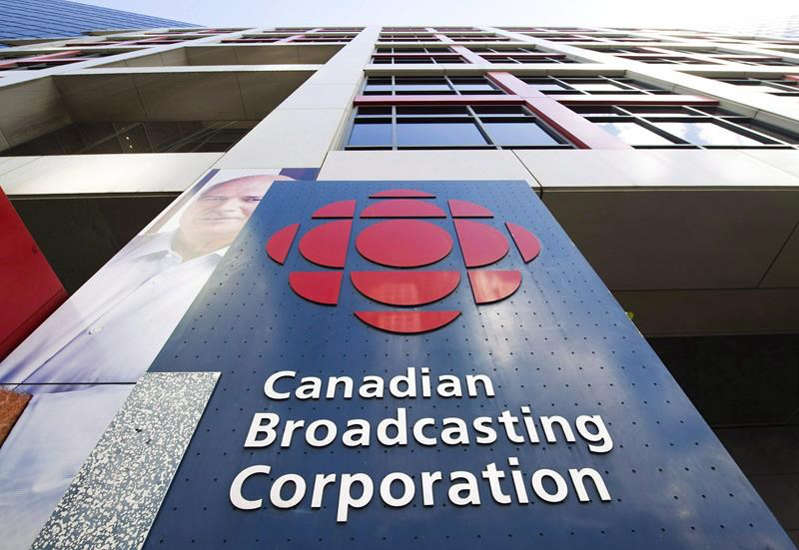
 Business1 day ago
Business1 day agoThere’s No Bias at CBC News, You Say? Well, OK…
-

 Uncategorized23 hours ago
Uncategorized23 hours agoMortgaging Canada’s energy future — the hidden costs of the Carney-Smith pipeline deal
-

 Daily Caller2 days ago
Daily Caller2 days agoTrump Reportedly Escalates Pressure On Venezuela With Another Oil Tanker Seizure
-

 International23 hours ago
International23 hours agoAustralian PM booed at Bondi vigil as crowd screams “shame!”
-
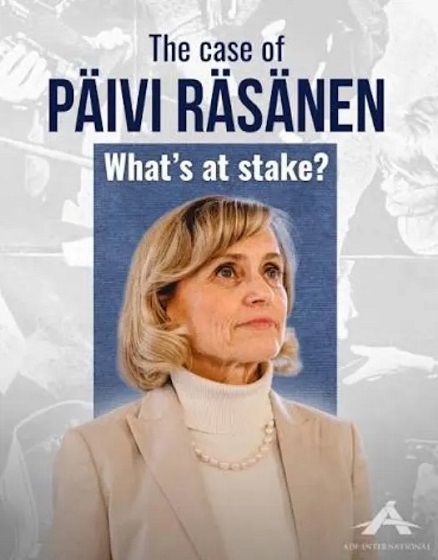
 Opinion1 day ago
Opinion1 day agoReligion on trial: what could happen if Canada passes its new hate speech legislation










